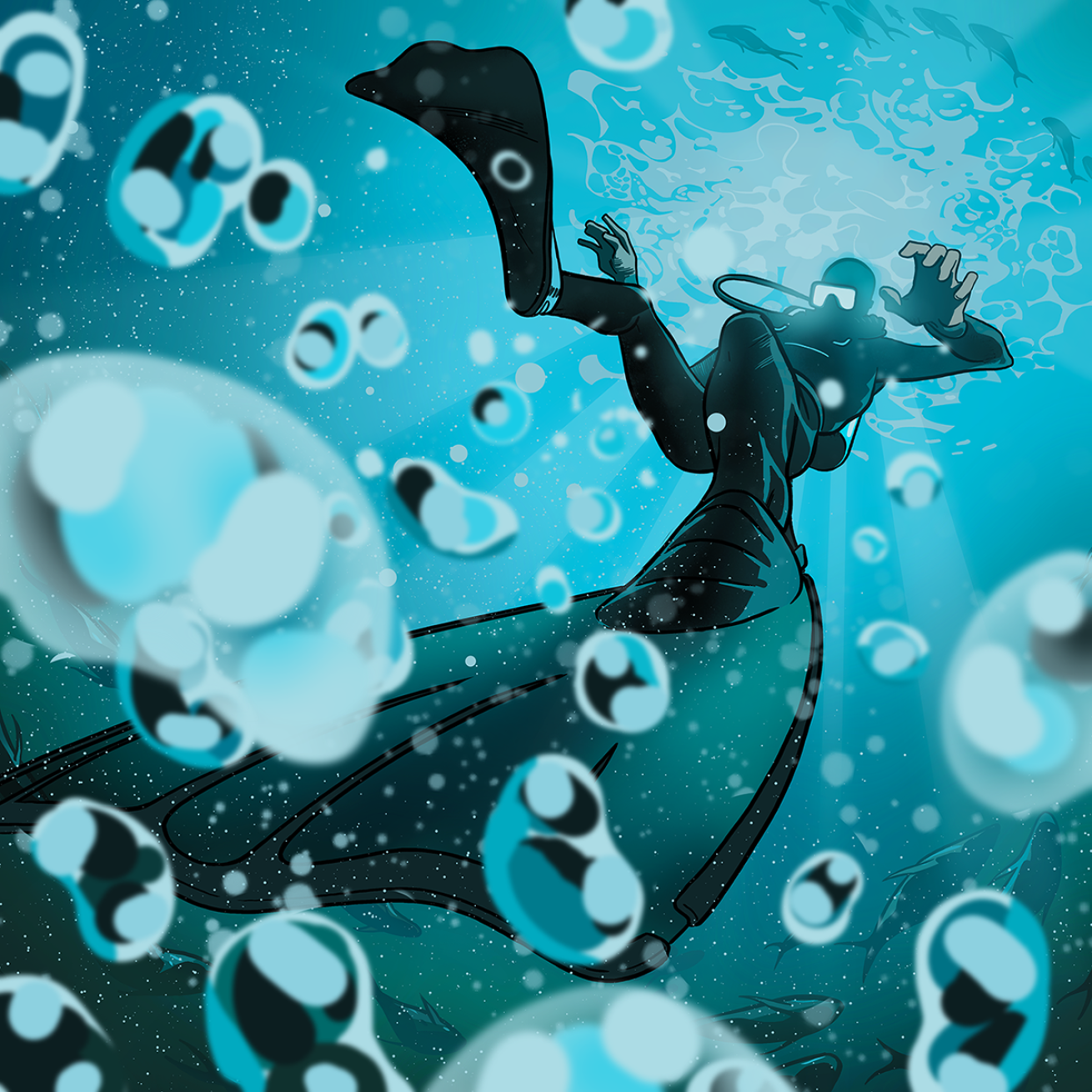Shot to the Surface | Lessons for Life

STEVEN P. HUGHESAn equipment malfunction pushes a diver to the surface on the last day of a liveaboard trip.
Tim was having the best time of his life. He had saved for this special dive trip for more than a year. He was just sorry it was about to end. He couldn’t wait to share photos of the animals he was seeing, above and below the water.
When he noticed he was a little negatively buoyant and starting to sink, he attempted to add some air into his BCD with his low-pressure inflator. But when he released the inflator button, air continued to flow.
The Diver
Tim was an experienced diver with an advanced open-water certification. He was 35 years old and had been diving for seven years, both in local lakes and on offshore charters. This was his first liveaboard dive trip.
The Dive
This dive was Tim’s first of the day, but it was his last day of diving on a seven-day trip. In total, he had made 18 dives so far. The liveaboard did two to three dives a day. To give all the divers extra bottom time, they used enriched air nitrox (EANx) all week. Tim was about 20 minutes into the dive, at a depth of approximately 90 feet of seawater, when he noticed that he was beginning to sink. He decided to swim to a new position and add air into his BCD. That’s when his problems began. The inflator button got stuck and his BCD continued to expand.
The Accident
Tim quickly became very positively buoyant. He tried to get the button to release and attempted to swim downward while he worked on it. He reported that this all happened so fast he couldn’t make any headway. He began a rapid, uncontrolled ascent to the surface.
Later, Tim estimated he ascended from 90 feet to the surface in about 15 seconds—a rate of about 6 feet per second. (The maximum ascent rate is no faster than 60 feet per minute, or one foot per second, but generally half that rate is recommended.) He described pulling on the dump valve on his shoulder but he was not able to release enough air to offset his still-expanding BCD. He said the shower of bubbles rising around him made it impossible to even think about disconnecting the inflator hose.
When Tim hit the surface, the diveboat crew could tell he was in trouble. They immediately got him back on board. The divemaster gave him oxygen, and the crew observed him the rest of the day. His diving was done for the trip. Tim never developed symptoms of decompression sickness (DCS) and was able to fly home two days later with no problems.
Analysis
Cases like this often raise the question of how a diver can make 18 dives in seven days, most of them in the 100- foot range, and make a rapid ascent without suffering DCS, while another diver can become symptomatic after a single dive. The answer is, there isn’t a good answer to the question. It is likely a combination of physiology, dive conditions, hydration status and other factors— some still not fully understood. First, we’ll take a look at his choice of breathing gas.
Enriched air nitrox has a higher concentration of oxygen than air does, meaning that it also has a lower concentration of nitrogen. An EAN32 mix would have 32 percent oxygen and 68 percent nitrogen, whereas air has 21 percent oxygen and 79 percent nitrogen. Nitrox gives you longer bottom times because of this lower nitrogen content. When diving multiple times a day for many days, as Tim was, you can get a more conservative profile by diving nitrox and setting your computer as if you were using air. If you do this, you must follow your computer’s recommendations based on the algorithm for breathing air, so you lose the benefit of extended bottom time. You must also manually track your own oxygen exposure. In Tim’s original report, he noted that most of the dives were around 100 feet for 50 to 60 minutes. Even using EAN32, he was well beyond the dive time limits according to NOAA EANx dive tables, which would indicate his max bottom time should be around 30 minutes. That suggests he was not staying at one depth and was working his way shallower over time.
Accidents caused by a dive gear failure are relatively rare, assuming the gear is properly maintained and cared for. It is possible Tim wasn’t rinsing his gear at the end of each dive day, allowing salt crystals to build up in the low-pressure inflator and causing it to jam. Even on a trip like Tim’s, where your gear barely dries out before you get back in the water, it is important to rinse your gear with fresh water. It is life-support equipment, after all. If Tim had had the presence of mind to unhook his low-pressure inflator hose from his BCD while venting air, he could have avoided the rapid ascent and then made his way to the surface without a problem. At the surface, he could inflate his BCD orally and have the boat crew look at his inflator before he got back in the water for the second dive of the day. Those are skills every open-water diver learns, but few practice after their initial certification.
Lessons For Life
Don’t push it. Stay well within the limits of your dive computer and consider a more conservative profile when doing repetitive dives over many days.
Practice basic skills. Know how to perform diving skills without having to think about them. Emergency skills should be second nature. Practice them from time to time before you need them.
Understand DCS. Learn the signs and symptoms of DCS, and be prepared to react in an emergency.










